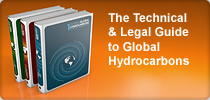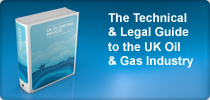THE TECHNICAL AND LEGAL GUIDE TO GLOBAL HYDROCARBONS
BOOK 2 – Preview
Chapter 10 – Unconventional Hydrocarbons and Unconventional Hydrocarbon Liquids
Technical
Chapter 10 provides the reader with a more in depth understanding of what unconventional hydrocarbons are before going on to focus on unconventional hydrocarbon liquids. In particular, oil sand bitumen; heavy and extra-heavy oil; tight self-sourcing oil; and thermal shale oil are all considered in detail, with a discussion of what the resource is, where it is found and how it is extracted and produced, together with an overview of associated costs and economic and environmental issues.
Legal
The legal section of Chapter 10 opens with an overview of some of the overriding legal issues which affect unconventional oil development across the world, including environmental impact assessment; land access issues; obtaining the requisite approvals and consents; and decommissioning. It then goes on to look at the national regulatory regimes applicable to oil sands, oil shale and extra-heavy crude oil development within a range of countries which have major deposits of these resources.
 Chapter 11 – Unconventional Gas
Chapter 11 – Unconventional Gas
Technical
The technical section of Chapter 11 provides an introduction to unconventional gas, why it is important and how large its resources are. It then goes on to discuss the principal sources of unconventional gas in detail, namely tight gas, shale gas, coal seam gas, gas hydrates and underground coal gasification, looking at what these are, global resources and major deposits, extraction and production, costs and economic and environmental issues.
Legal
The legal section of Chapter 11 begins with an introduction to commercial developments in the areas of coalbed methane, tight gas sands and shale gas. It then provides an overview of the legal and regulatory frameworks in the USA, Canada, China, Australia, Poland and the UK.
Image - Natural gas derrick, Wyoming, USA (Credit: Nivek Neslo / The Image Bank / Getty Images)
Chapter 12 – Gas to Liquids
Chapter 12 considers the emerging need to convert remote stranded gas reserves into environmentally friendly synthetic oil fuels. It sets out the process used to make this conversion and provides an overview of current GTL projects. It also provides a summary of some of the commercial issues associated with GTL, including environmental considerations, economics and markets and contractual issues relating to GTL technology.
 Chapter 13 – International Commercial Contracts – Oil and Gas
Chapter 13 – International Commercial Contracts – Oil and Gas
Chapter 13 provides a legal overview of different consent and licensing regimes and different types of joint ventures. It goes on to discuss the various commercial agreements required to establish an unincorporated joint venture, namely confidentiality agreements; joint bidding agreements; joint operating agreements; pre-unitisation agreements; unitisation agreements; farm-out / farm-in agreements; sale and purchase agreements; seismic contracts; drilling contracts; well service contracts; decommissioning agreements; and decommissioning security agreements. Detailed appendices compare standard form joint operating agreements; standard clauses in model joint operating agreements; and model drilling contracts.
Image - Drilling rig, Gulf of Mexico (Credit: Terry Vine / Stone / Getty Images)
 Chapter 14 – Transparency, Conventions, International Practice and Compliance
Chapter 14 – Transparency, Conventions, International Practice and Compliance
Technical
The technical section of Chapter 14 looks at the need for transparency and transparency conventions in the dealings between governments, national oil and gas companies, international oil and gas companies and service companies and the importance of their compliance. Examples of global transparency initiatives are provided.
Legal
Chapter 14's legal section examines the legal framework which has developed to support the growing trend towards transparency, accountability and good governance, how this affects the oil and gas industry and what steps must be taken to minimise the business risk in this area. Various sources of regulation are considered, including international conventions and how the principles of these conventions are applied under national law, using the UK as an example.
Buy a hard copy of Book 2: The Technical & Legal Guide to Global Hydrocarbons here.
Buy an electronic copy of Book 2: The Technical & Legal Guide to Global Hydrocarbons here.



